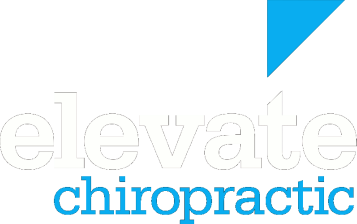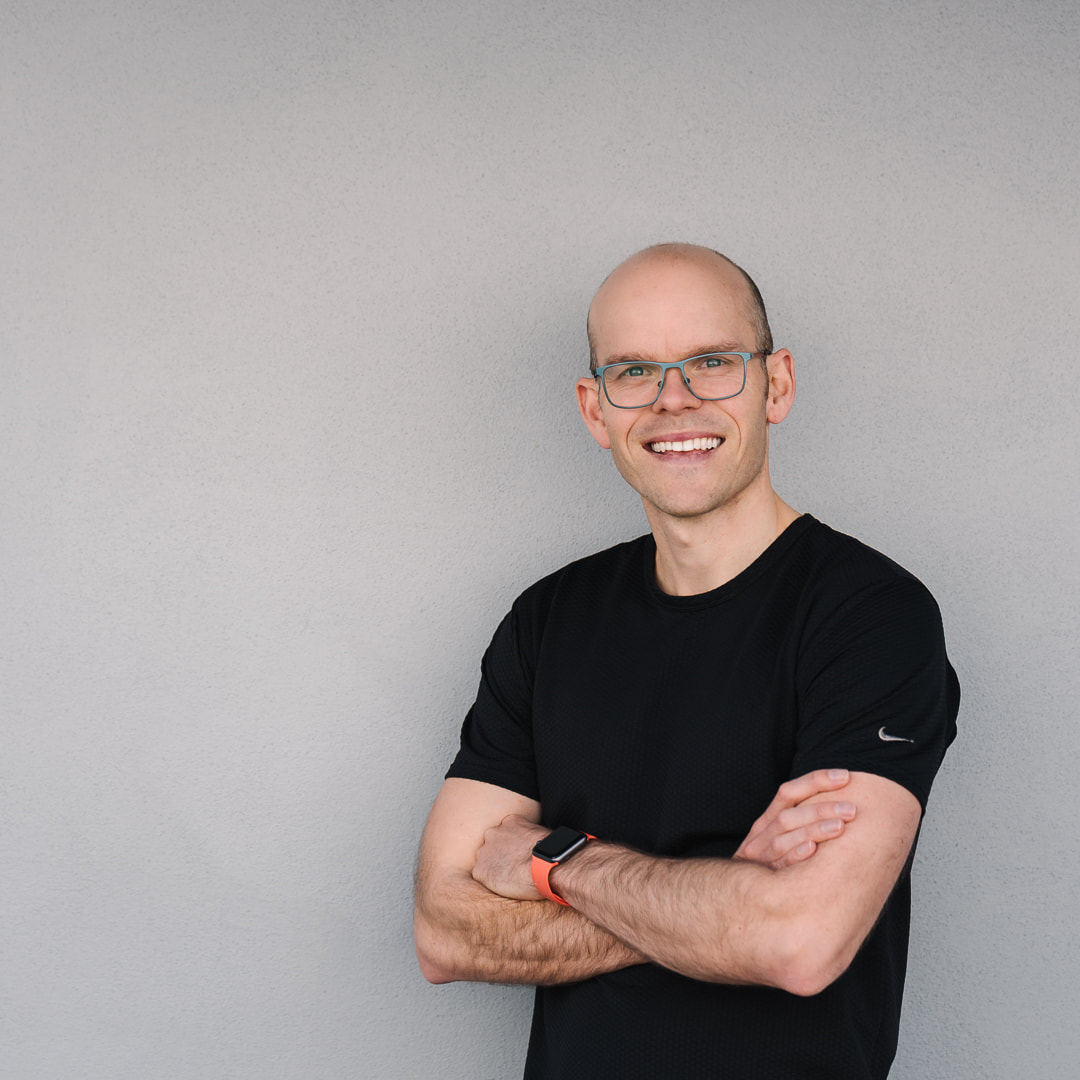|
The world federation of chiropractic has created an initiative called “just start walking”. The New Zealand Chiropractors Association is also getting behind it. Chiropractor and New Zealand Chiropractors Association (NZCA) spokesperson Dr Hayden Thomas explains: ‘Walking benefits all aspects of your health from increasing your levels of vitamin D, improving the efficiency of heart and lung function, reducing circulating stress hormones, assisting spinal function, and helping with weight loss. And it’s something nearly everyone can do to increase their fitness and well being’.
0 Comments
Our tendency to sit a lot these days and our sedentary lifestyle often leads to numerous problems, in particular, postural abnormalities. One of the main outcomes of these postural changes that I see regularly in practice is called Upper Cross Syndrome (UCS).
Upper cross syndrome is characterized by tightness in the chest and the upper back/neck and weakness in the mid back and the front of the neck, hence the ‘cross’ part of the name. This syndrome can cause several different problems in the body and can lead you to be more prone to injuries. Continue reading to find out more about UCS and the simple test you can try at home to see if you have it. A disc injury is often called lots of things; a slipped disc, a herniated disc, a disc prolapse, a disc protrusion, a disc bulge, degenerative disc etc. Whatever you call it, a disc injury is very common these days. In fact, a large portion of the population actually have disc bulges, but they go unnoticed, as not all disc injuries cause pain. My aim with this 2 part blog series is to firstly describe what a disc injury is and how it occurs. The second post will be how disc injuries can be treated and what you can do at home to help. I have found that the more you know about a problem, the more informed your decision making process can be. This is extremely important with disc injuries as there are a few different treatment options with some of them being quite invasive. Whether you have an injury or not, I hope it makes things a lot clearer for you and gives you some ways to improve your function and hopefully prevent an injury in the future. So what is a disc injury and why do they occur? Continue reading to find out.
As you have learnt from my previous 4 posts on headaches, a lot of headaches are often caused by something simple like postural problems, neck dysfunction, lack of sleep, poor diet etc. However, in a small number of cases, some headaches can be a warning sign for a potentially more serious issue. In this post I wanted to discuss some headaches that are more of a medical emergency and need to be looked at quickly. These headaches are important to know and be aware of so if you, or someone you know gets one, you can act quickly. These are often referred to as “Red Flags”. Continue reading to find out what they are.
So far in my headache blog series, I have discussed how chiropractic care can help people that suffer from headaches. I have given 7 useful tips for helping ease the pain of headaches at home and finally described what a cervicogenic headache is and how to help stop it. In this 3rd post I will discuss one of most common types of headaches – Tension Headaches.
Tension headaches are commonly referred to as stress headaches. They can be periodic or can be more constant in nature. People often describe them as a mild to moderate, constant band-like tightness, or pressure around the forehead or back of the head and neck. They can last a few minutes or can last days. People don't often get the visual changes that other headache types can create. How do you stop them? Continue reading to find out. I think the feet are a part of the body that should have more attention paid to them. Most people wouldn't look at the feet unless there was a problem with them. This could be a mistake. Having feet that are working well enables your body to function better. Foot dysfunction can lead to knee, hip, lower back and upper back problems. I came across this research the other day that showed how self-myofascial release of the underside of the foot can increase hamstring and lower back flexibility. It is a very simple thing to try. Continue reading to see what they did PLUS I give my 5 simple tips for improving your foot function.
Hypermobility is where your joints move more than ‘normal’ or have a bigger ‘range of motion’ than normal. People that are hypermobile can often get into postions that others find impossible. Think of a gymnast, generally speaking, they are hypermobile. Hypermobility is often hereditary and can occur in some joints and not others, but it is not necessarily a bad thing. You can be hypermbile and have no problems or it can cause you issues. There is a simple test you can do to see if you have hypermobile joints. It is called the Beighton Hypermobility Score. Continue reading to try the simple test and see what you score.
I was doing my CPD (Continuing Professional Development) training this week and came across an interesting quote, “your body gets good at what it needs to get good at”. The program I was studying was a mobility program and this quote was based on mobility, but I think it can apply to other areas as well. What does it mean you may ask? From a mobility perspective, your body will adapt to what it needs to. In my previous post I talked about ways to get the most out of your exercise based New Year’s resolution. There is one thing I forgot to add to the list in the last post, and that is accountability. If you are accountable for your actions you are more likely to succeed. Accountability can be with a personal trainer, a training partner or having a friend or partner help keep you on track.
I have always said that I practice what I preach. By this I mean doing appropriate stretches, exercises, eating well and so on, to maintain function and hopefully good health. I am like most people and made a few resolutions this year. My main resolution is to improve my fitness, strength and stability. To help me succeed in this resolution I am writing about it here to make sure I have accountability and succeed. Continue reading to find out what I am doing. I love technology. Anyone that knows me is aware of my love for gadgets and all things new and shiny. Technology can make life easier, I often think what it was like before I had a smart phone and how I couldn’t live without it now. However there is a downside to this technology and our continual use of it. Our bodies are not designed to continually look down at computer screen or mobile phones. I see the effects of this every day in practice. Neck and upper back pain, headaches, lower back problems, all stemming from poor posture. You may have seen an article floating around Facebook and the internet the last week, where the weight of your head changes depending on the angle you are looking at. What Dr Kenneth Hansrai found was very interesting and something we all should be aware of.
I have been practicing chiropractic care for a while now and know the benefits of a chiropractic adjustment. Being a small and relatively young profession, chiropractic care has in the past, lacked the research to back up what we do and the effect it can have on the body. This is definitely changing with numerous research projects helping explain what how chiropractic care works. In fact one of the foremost researchers in chiropractic care, Heidi Haavik, studied at the New Zealand College of Chiropractic (where I studied) and is the head of research at the college. She has some amazing projects on the go and was featured on Seven sharp a few weeks ago talking about the effect of chiropractic care and how it can improve your sex life! Watch it here. I recently came across a research paper looking at the effect of manual therapy in Resting-State Functional Connectivity and how this manual therapy can modulate or affect pain. The results of the research were quite interesting. Continue reading to find out what they found and what it means.
Optimal function of the body generally narrows down to one key point – Balance. If your body is not in balance, you are at risk of injury. One common problem that causes an imbalance, especially in men, is carrying and sitting on your wallet in the back pocket. More often than not these days, wallets tend to be quite bulky with all of the cards we need to carry. So why is sitting on a wallet in your back pocket a bad thing? Continue reading to find out.
The mind is a powerful thing, but can the mind affect your health and recovery from injury? According to several studies, it appears that positive thinking can in fact, affect your health. The Placebo effect is the healing power of positive thinking. The Nocebo effect, on the other hand, is the opposite of this, the power of pessimism or negative thoughts. The way you think can definitely affect your health, how you heal and the outcome of care. If you approach a health care provider for a certain problem with the expectation that it won’t work, then chances are, it won’t work. Continue reading to find out how this happens and how to help.
Neck pain is a very common complaint that I see in practice. The causes of this discomfort can vary dramatically. Some new research suggests that poor breathing patterns may affect how the neck functions and therefore could be a contributing factor for neck pain.
Continue reading to find out what the research revealed and why your breathing technique can affect your neck function. If you are unfortunate enough to develop acute back pain, what do you do first to help ease the discomfort? Do you grab some pain relief? Do you ice it? Do you do some stretches? Or do you go to your chiropractor for an assessment? There are lots of options!
If you are a person who regularly takes paracetamol for back pain, you may not be getting the results you want according to some new research that was published recently in The Lancet. This research was the first large randomised trial to compare the effectiveness of paracetamol with placebo for low back pain, they found that paracetamol is no better than placebo at speeding recovery from acute episodes of lower back pain or improving pain levels, function, sleep or quality of life. The findings question the universal endorsement of paracetamol as the first choice painkiller for low-back pain, say the authors. Continue reading to find out more about the research and a different, natural approach to back pain. It is often said that muscle and strength decline as a function of aging alone. Put simply, this means that as you get older you are naturally going to lose strength and muscle mass and there is not much you can do about it.
A new study by Dr Vonda Wright and her colleagues that can be found at the The Physician and Sports medicine, may counteract this belief. They took detailed measurements of 40 masters athletes between the ages of 40 and 81, and found a surprising lack of age related muscle loss. They suggested that these declines that are usually seen, may signal the effect of chronic disuse rather than muscle aging. Continue reading to see a sample image of their results. It is very interesting. A big emphasis of my work is stability, especially in people with lower back pain or a history of recurring lower back pain. The first step when someone comes to my chiropractic practice, is to assess the area, restore optimal
function and reduce the initial complaint through chiropractic care. Once things are functioning better, the emphasis moves onto why the problem was there in the first place and how we can stop it from coming back. This invariably will include some sort of stability exercises and stretches. There are hundreds of different exercises and workouts out there and what is best for an individual will depend on numerous factors. A good question to ask is, what is the difference between an exercise done seated and standing? I came across some interesting research that I thought I should share. People often think that any pain in the leg, whether it is in the front, back or side, is called 'sciatica'. However, this is not the case. Sciatica is defined as pain or discomfort associated with the sciatic nerve which runs from the lower back, down the back of the legs to the feet. It is estimated that up to 40% of the New Zealand population will experience sciatica at some point in their lives.
To fully understand Sciatica, you first need to know what the sciatic nerve is. The sciatic nerve is the longest nerve in the body and is actually composed of two nerves, the common fibular (or peroneal) nerve and the Tibial nerve. These nerves are originally formed from 5 different nerve roots in the lower lumbar spine and pelvis. These nerves join together then run down the back of the thigh to knee level where they split and one travels down the front of the lower leg and one travels down the back of the lower leg. Lets look a bit deeper and see how sciatica occurs, how you diagnose it and most importantly, how to fix it. Repeated cycles of lumbar hinging (flexing of the lower back) has been shown to be the quickest way to herniate a disc in the lower back. The research shows that the injury to the disc occurs from the inside out. So how does this occur? In order to understand this you first need to know how the intervertebral discs are structured.
One of the questions I get asked a lot in the clinic is, “is my back sore because I am overweight?” It is a hard
question to answer and I usually respond by saying that I see people of all sizes with back pain so it is not the only reason your back is sore, however, being overweight may not help the situation. In the book The Physiology of the joints by Kapandji, it says that every extra 1lb of weight a person is carrying equates to 10lb extra pressure on the discs in the lower lumbar spine. This is quite a big effect and can account for some of the pain an overweight person feels. This extra pressure on the discs can lead to problems like wear and tear and disc bulges and could also slow down your recovery time. Carrying extra weight can also lead to problems with other joints, especially the knees. The flip side of this, is that if you lose weight it can have a big effect on the joints. An article published by Harvard Health Publications stated “In one study, the risk of developing osteoarthritis dropped 50% with each 11-pound weight loss among younger obese women. For men who get their body mass index (BMI) down from 30 or higher to between 25 and 29.9, knee osteoarthritis would decrease an estimated 20%. A similar change in women of the same age could cut the incidence of osteoarthritis of the knee by about 30%”. Losing weight can help your joints and your recovery, but it can also have a huge effect on the risk of future health problems. We have all heard about the benefits of weight loss for general health reasons. For example, a 22lb weight loss can reduce the risk of heart attack by 75% and weight loss can help reduce the risk of developing Type 2 Diabetes and can help normalise blood pressure etc. There is tons of information out there about this topic that is very interesting. I may talk about that more in a future post. The idea to take from this blog post is that being overweight may not necessarily be causing the back problems you are suffering from but may a contributing factor. As with any problem, you need to have it assessed to see what the cause is and get it corrected. Losing weight will help take some pressure off the joints and help protect them, but it will also help improve the overall function of your body. If you have any questions or have a problem that you would like to have assessed, please contact us, and we can get you started on your road to recovery. The ice and heat debate is a never ending discussion. Depending on what book you read or who you talk to, you will get different answers as to what is best and how to use them effectively. Here is my take on heat therapy.
Heat therapy can have numerous benefits and has long been associated with comfort and relaxation. However, it can provide both pain relief and healing benefits for injuries. Heat is best used for sub-acute and chronic or long term conditions. So how does it work? Heat therapy can help provide relief through several mechanisms:
How to use heat therapy effectively My suggestion for using heat therapy is to have a good heat source like a wheat bag, hot pack or a heat lamp. My favourite thing to use is a wheat bag for its ease of use and safety (if you follow the instructions and heat it correctly). If you are using a microwave to heat a wheat bag, make sure you put a cup of water in the microwave to avoid overheating the wheat. When applying the heat I have found short bursts tend to work more effectively from a physiological perspective. Apply the heat for 20min (to make sure it penetrates deeper tissues) them remove the heat for approximately 40 min before re-applying for a further 20min. These short bursts will help bring two big rushes of fresh oxygenated and nutrient rich blood to the area to help speed up the healing process. You can leave the heat on for longer, but applying it in shorter bursts will give you the best physiological response. We stock a range of wheatbags made locally in Whenuapai. They are great value and great quality. If you come to my practice, make sure you check them out. If you would like some more information about this article please contact us. Stay posted for the next blog on the reasons for using ice and how to use it effectively. |
Dr Craig BuscombBringing you news, research and advice on health, wellness, exercise and chiropractic care to help take your health to the next level Archives
July 2024
Categories
All
It's what you do everyday that impacts your health, not what you do sometimes. |
|



 RSS Feed
RSS Feed


